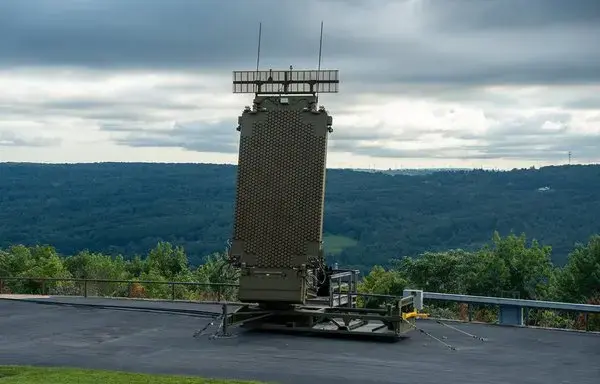The US Air Force received its first the AN/TPY-4 in April, marking a major milestone for the Three-Dimensional Expeditionary Long-Range Radar (3DELRR) program.
The AN/TPY-4 is a next-generation, ground-based radar system designed to provide long-range air and missile surveillance.
The L-band 3D radar employs a gallium nitride-based active electronically scanned array to detect a wide variety of aerial targets.
This enables other defense systems to register, track and defend against everything from the smallest unmanned targets to ballistic missiles.
The AN/TPY-4 is integrated with the Link-16 communications system, allowing real-time communications across platforms, including other radar systems.
It can communicate with essential components of the US Army missile defense and aerial capabilities, including the Terminal High Altitude Area Defense (THAAD), Patriot surface-to-air missile system and AH-64 Apache Helicopters.
Link-16 compatibility also enables real-time communication with US Navy platforms, from Aegis-enabled ships such as the US Navy’s cruisers and destroyers to submarines beneath the water’s surface.
The AN/TPY-4 is also able to communicate with US Air Force aircraft, including airborne early warning and control aircraft and F-35, F-15 and F-16 fighter jets.
Flexible response
The AN/TPY-4 has a cutting-edge, fully digital software-defined sensor architecture, enabling the radar to adapt to emerging threats and missions.
Its advanced ability to detect smaller, next-generation threats is one of the radar's defining features -- namely small unmanned aerial systems (UAS) that are available at a relatively low cost.
The radar provides 360-degree long-range air surveillance and missile defense capabilities, even at distances of up to 556km, and is capable of simultaneously conducting multiple missions.
The system's performance remains effective even when faced with electromagnetic interference and jamming attacks, ensuring early warning and detection stay functional.
Its effectiveness also can be attributed to its flexibility, which makes it a sound addition to any integrated air defense umbrella.
The AN/TPY-4 is available in both fixed and mobile configurations and can be transported via C-130, C-17, truck, rail or helicopter, making it even more mobile and survivable than its predecessors.
As of April, the US Air Force has ordered 19 AN/TPY-4 systems. Norway has ordered nearly a dozen, and, in June, Sweden signed a deal to acquire the AN-TPY-4. Singapore also has expressed interest in the system.






